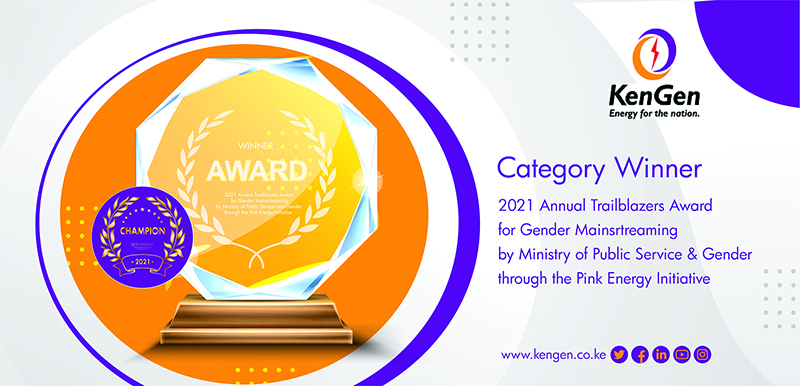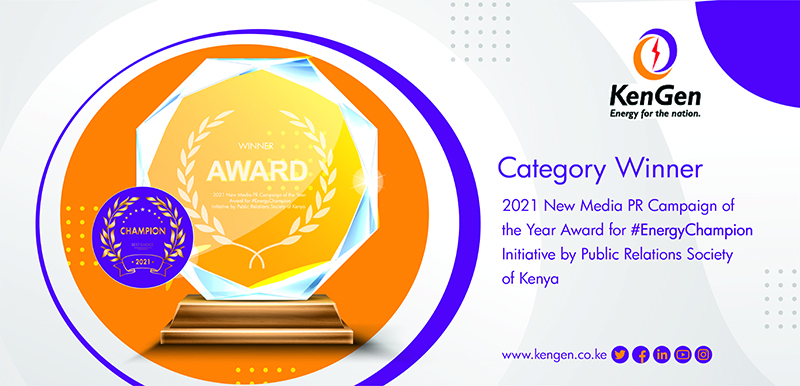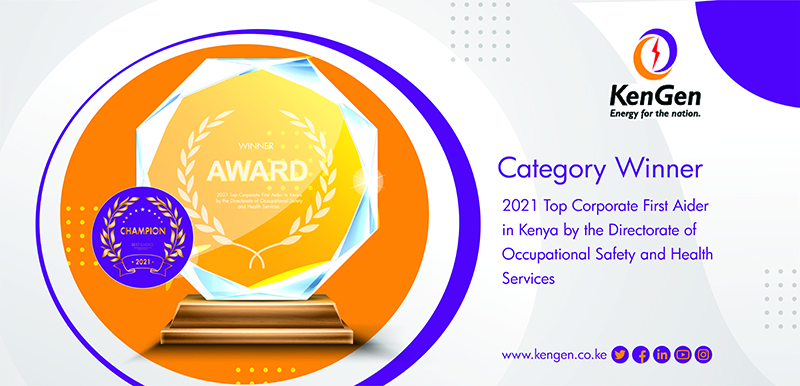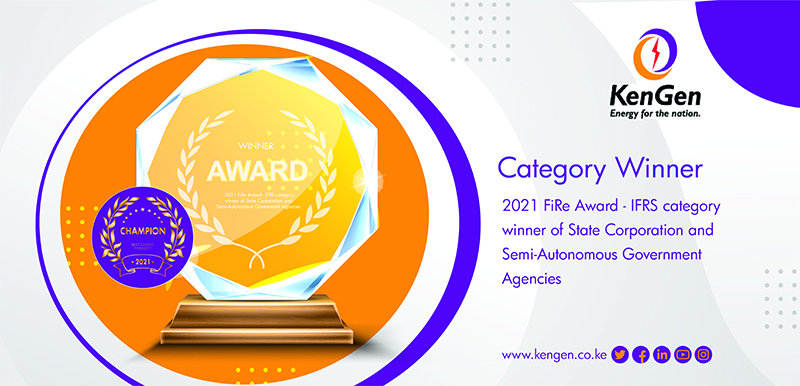By Judith Mbogo
Senior Officer, Communication
Corporate Social Responsibility (CSR) has become a term that is used frequently to examine some key activities of businesses. With globalization pressures and increasing burdens on governments to provide comprehensive social services, the microscope has been focused on how firms play their part in sharing this burden.
Views vary from those who believe that CSR is a distraction from profit maximization to those who argue that participation in such activities contributes to positive social transformation, while benefiting participating organizations.
However, as a responsible corporate citizen, the Kenya Electricity Generating Company PLC, (KenGen) believes in adding value to the communities living around its areas of operation. The company recognizes that it is part of its responsibility to build and nurture relationships with these communities and all its stakeholders.
CSR has been a priority for KenGen for over twenty years. There has never been a more important time to support our communities since institutions are an integral part of the society, and their activities have a bearing on the lives of a great number of the people involved.
While companies have a duty to their shareholders, in terms of increasing profits and, therefore, dividends, they are urged to recognize that they operate in a world where they have to interact with the communities and even other business organizations hence the need for mutual responsibility is imperative.
KenGen recognizes the role of Corporate Social Responsibility in creating a conducive environment for business sustainability. In addition to supporting its key internal stakeholders who are the employees, the company also provides support to various community-targeted partners and projects and creates relationships and partnerships with the host communities of the areas where its installations are located. Hence CSR depicts the “organization’s commitment to operate in an economically and environmentally sustainable manner while recognizing the interests of its stakeholders.”
The heart of any sustainable business lies in its ability to engage, inspire, and leave a lasting impact on both internal and external stakeholders. That is where the communication arm of any organization comes in, to aid in crafting authentic and compelling tales that captivate, educate, and drive action. They have the unique ability to breathe life into the data, statistics, and complex initiatives, transforming them into relatable and meaningful stories that touch the hearts of those who hear them.
A good example is the journey KenGen undertook to tell of the activities and programs it has participated in and supported through the just concluded CSR documentary produced which highlights the successes, achievements and impact of KenGen’s CSR initiatives through its three core pillars within the community over the years. Such stories have an incredible ability to break barriers and bridge gaps. They transcend cultural boundaries and unite people in a shared purpose; it all involves connecting on a human level, crafting narratives that inspire action, build a loyal community and empower positive change.
The stated documentary can be watched on the KenGen Kenya YouTube Page - https://youtu.be/_UlY4IbMU2w.
KenGen’s CSR initiatives focus on three core pillars which are Education, Environmental Conservation and Water and Sanitation. Specific CSR programmes undertaken by KenGen include Secondary and University Education Scholarships, Community Stakeholder Engagement, Green Initiative Challenge (GIC) in schools which focuses on environmental sustainability, donation of seedlings to its staff and partnerships with various institutions and counties in support of the Presidential Directive of planting and growing 15.6 billion trees by 2032.
There are also efforts in providing basic necessities such as food and water. Water is a key CSR pillar and area of focus and is also a catalyst to Kenya’s social and economic development plan as envisioned in Kenya Vision 2030 blueprint. KenGen has therefore partnered with communities around its areas of installation to provide clean water through the establishment of collection points, provision of supply pipes and water tanks, treatment of polluted water and also in drilling of boreholes and sand dams.
KenGen also has facilitated various food donations to communities that are within the Arid and Semi-Arid (ASAL) regions. Through the food donations, the company is able to assist these communities live better livelihoods.
KenGen has been instrumental in facilitating infrastructure development in its areas of operations. Such initiatives include construction and rehabilitation of roads such as the Olkaria 10KM road, this has greatly helped the communities within those areas to maneuver with ease as they go about their daily commercial businesses within their locality. Additionally, KenGen has constructed resettlement houses in Olkaria among others.
Other projects include offering skills development programmes to needy communities, construction of classrooms, dormitories, libraries and laboratories to aid in support of education of students through ensuring there is provision of a conducive learning environment. All these initiatives, projects and developments constitute a fraction of the initiatives KenGen has supported and continues to support.
KenGen is a responsible corporate citizen, and the success of the company is intertwined with its key stakeholders. KenGen is cognizant of the fact that all developments are people-centered and that communities residing in areas of its operations are major and key partners. The Company is also alive to the need of obtaining the social license to operate from the communities prior to and during all its project implementation and always participates in initiatives that are relevant to the needs of the communities.
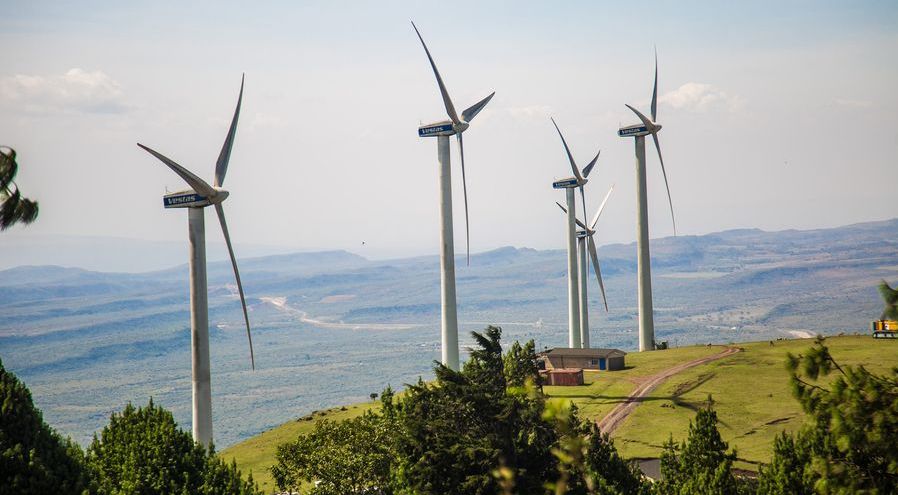
By Alex Misuko
In simple terms, wind can be defined as moving air. For centuries, mankind has leveraged on the wind to drive many things, making it, one of the most rapidly expanding renewable energy sources in the 21st century.
According to recent data from the International Renewable Energy Agency (IRENA), the installed capacity of onshore and offshore wind energy worldwide has expanded by a factor of about 75% over the previous two decades, moving from 7.5 gigawatts (GW) in 1997 to approximately 564 GW by 2018.
But with all this happening, where has wind power come from, and where are we headed to?
The first wind turbines surfaced more than a century ago following the invention of the electric generator in the 1830s. Thereafter, engineers began attempting to harness wind power to generate electricity. Although wind power was first produced in the United Kingdom and the United States in 1887 and 1888 respectively, modern wind power is thought to have originated in Denmark, where horizontal-axis wind turbines were erected in 1891, and a 22.8-meter wind turbine started operating in 1897.
Utilizing the kinetic energy provided by moving air, wind energy is used to generate electricity. Using wind turbines or other wind energy conversion technologies transform the kinetic energy into electric energy. Wind strikes a turbine's blades first, turning them and the turbine attached to them. By rotating a shaft that is attached to a generator, this converts kinetic energy into rotational energy, providing electrical energy through electromagnetism.
The turbine's size and the blades' length, will determine the quality and quantity of electricity generated. The output is inversely correlated with both the rotor's size and the wind speed cube. Theoretically, the potential for wind power doubles by eight when wind speed doubles.
The total capacity of wind turbines has developed over time. In 1985, average turbines had rotor diameters of 15 meters and rated capacities of 0.05 MW. New wind energy generators today feature offshore turbine capacity of 3-5 MW and onshore capacities of roughly 2 MW.
The average capacity of wind turbines grew from 1.6 MW in 2009 to 2 MW in 2014. With rotor diameters up to 164 meters, commercially available wind turbines now have a capacity of up to 8 MW
In Kenya, right at the northern tip of Kajiado County, about 25 kilometers from the capital city, Nairobi, is KenGen's Ngong Wind Farm, which was the first Wind Farm in Kenya and East Africa, sitting on 3,077.6 hectares of land. Its development dates back to 1993 when it had only two turbines.
In 2009, Phase I of Ngong wind farm was built. Phase 1 consisted of six turbines of 850 kW with a capacity of 5.1 MW which did very well; hence KenGen came up with Ngong Phase II, which was commissioned in 2014. Phase 11 had eight wind turbines from Vestas, a Danish model, and an additional 16 from Gamesa, which was a Spanish model generating 850Kw per turbine.
Currently, the farm has 30 wind turbines that readily convert the kinetic wind energy blowing from the windward end to the leeward side of the Great Rift Valley, generating 26 MW of clean power for the nation.
So next time you switch on the lights in your home, remember that it could be from the picturesque Ngong wind power plant.
Page 1 of 8


